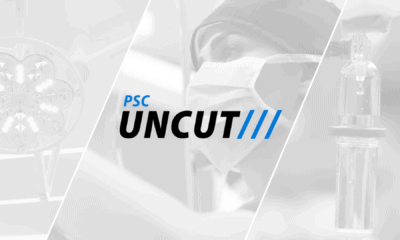Many, many people are curious about facial aging options as their mirrors begin to show signs of time passed. For most of these curious souls, they are too youthful for a surgical facelift, but still have a tired, mildly weathered look to them.
“The hallmark of facial aging is loss of volume,” explains Dr. William P. Adams Jr., a board certified plastic surgeon in Dallas. “That’s been one of the big new paradigms in the past 10 years.” In short, volume is what provides young folk that round, smooth face we identify youth with. As time goes by, volume in the form of fat and even skeletal mass is lost in the face, leaving the skin to drape more loosely across once-filled areas.
For many, this volume loss begins in the 30s and certainly 40s, and will continue. When the issue becomes noticeable, advances in volume restoration can certainly provide a way to age gracefully and look as young as people in modern times feel inside.
Volume Replacement with Fillers
Injectable procedures are widely spoken of in the media with Botox leading the stories with its catchy name and incredible success record. “Botox and fillers” seem to be a succinct catchphrase for media outlets and journalists to bundle these minimally-invasive procedures, but it’s worth it for all to know the difference.
Botox works to ease wrinkling by limiting the use of muscles in the face, while fillers do literally as their name implies: fill. What do we need filled in the face? Those areas that have lost the volume that provided a youthful look.
“Fillers have been around for a while and they work, there’s no question,” explains Dr. Bruce Van Natta, a board certified plastic surgeon in Indianapolis. “People can come in over a lunch time, have these injections and restore volume. And we have newer and more versatile fillers than we’ve ever had.”
Fillers work, and they work well. When used appropriately by a skilled injector, they can restore a more youthful face by filling in areas of volume loss. The one real downside is they aren’t permanent and require reoccurring treatments anywhere from 4-24 months depending. As exciting as the technology has been and continues to be, one more recent technique really has physician’s attention and excitement: utilizing fat for volume loss.
Fat: Once the Enemy, Now the Savior
The magic of fat transfer is a dream-come-true. How many have thought in the past, “I wish I could take some fat from here and put it there?” That wish is being granted in plastic surgery offices every day across the globe.
Buttock augmentation is on an exponential rise due to the honed practice, and everything from breast augmentation to hand rejuvenation are receiving benefits from fat. Another area where it’s tremendously exciting is in the face by filling it up with what we used to have.
“I will tell you, in my practice, I’ve really made a conversion. I really do encourage and push patients towards fat,” admits Van Natta. “It’s natural. It’s the ultimate recycling; taking it from somewhere you don’t want it and putting it where you can use it, but there’s other benefits, too! The fat contains stem cells, and those stem cells secrete growth factors when we inject this fat. And also fat is really, I would say, more of a permanent, long-term fix.”
Fillers and Fat in Tandem
While fat is tremendously rewarding, Dr. Clifford P. Clark III of Florida still finds specific uses for fillers that can synergize with fat injections. “I would like to point out that I think fillers and fat do very different things,” he explains. “You can inject the dermal filler into the dermis, and oftentimes, especially in my climate, you see people with very dehydrated skin that has lost a lot of collagen and actually injecting it into the skin itself changes the consistency of it.”
“Secondly, some of the lines are etched into the skin itself rather than the deeper tissues, so I use the fat to volumize the deeper areas where there’s been skeletal loss, fat loss, muscle loss, but then the filler to ease the wrinkles, the folds, and the cracks, if you will, in the skin.”
Whether fat, fillers, or both are the answer, both Dr. Clark and Van Natta point out the most important aspect of the procedure: finding an injector trained to not only deliver accurate results, but keep you safe in the process.
Injections Seem Easy, but Not Everyone Is Knowledgeable Enough for Safety and Great Results
Since filler injections are not technically surgery and do not require an OR, many physicians beyond plastic surgeons have begun to offer the treatment due to the immense interest. Some may undercut more qualified practitioners in price to get people through the door, and this could lead to patients sacrificing safety and effectiveness for a few bucks.
“One of the points I want to make though is that we see a lot of people that are getting fillers in strange places by strange people and they have no idea what it is,” shares Clark. “I think it’s an important conversation: is it going to be fat? Or is it going to be a filler? What kind of filler it is? And also who is injecting it?”
“That’s a really good point because some of the people who are doing fillers can’t do what we do as board certified plastic surgeons and offer them the alternative with fat,” responds Van Natta. “Get a board certified plastic surgeon who DOES a lot of these types of procedures and don’t trust yourself to a deal.”
No matter the intensity of the procedure, non-surgical treatments are still procedures. Many would argue it’s better to spend a little more for the experience and know-how of a trained physician rather than a provider looking to make a quick buck.
In the end, would-be patients can marvel in the excitement of what modern medicine has discovered and researched to provide elegant, nuanced solutions to facial aging.
VIDEO TRANSCRIPT
WILLIAM P. ADAMS JR., MD: The hallmark of facial aging is loss of volume. That’s been one of the big new paradigms in the past 10 years.
There’s a lot of options for patients that are quite confusing. They can fill their face with fillers, fat has become very popular… Bruce, how do we sort it all out?
BRUCE VAN NATTA, MD: Well, you know, it is a little confusing, and understandably so for patients. Fillers have been around for a while and they work, there’s no question. People can come in over a lunch time, have these injections, restore volume, and we have newer and more versatile fillers than we’ve ever had.
Now, there are variations in these: how long do they last, there are some that are billed as permanent fillers. And in some cases we have concerns about what’s the long-term effects of injecting this stuff into the soft tissues.
Then you look fat. And I will tell you, in my practice, I’ve really made a conversion. I really do encourage and push patients towards fat. It’s natural. It’s the ultimate recycling; taking it from somewhere you don’t want it and putting it where you can use it, but there’s other benefits, too! The fat contains stem cells, and those stem cells secrete growth factors when we inject this fat. And also fat is really, I would say, more of a permanent, long-term fix.
CLIFFORD P. CLARK III, MD: You know Bruce I couldn’t agree with you more about fat, but I would like to point out that I think fillers and fat do very different things. You can inject the dermal filler into the dermis, and oftentimes, especially in my climate, you see people with very dehydrated skin that has lost a lot of collagen and actually injecting it into the skin itself changes the consistency of it.
Secondly, some of the lines are etched into the skin itself rather than the deeper tissues, so I use the fat to volumize the deeper areas where there’s been skeletal loss, fat loss, muscle loss, but then the filler to increase the wrinkles, the folds, the cracks, if you will, in the skin.
And there also able to see what that looks like. So maybe oftentimes the filler acts as a bridge to when we might use a little fat in the operating room.
One of the points I want to make though is that we see a lot of people that are getting fillers in strange places by strange people and they have no idea what it is. I think it’s an important conversation: is it going to be fat? Or is it going to be a filler? What kind of filler it is? And also who is injecting it?
VAN NATTA: That’s a really good point because some of the people who are doing fillers can’t do what we do as board certified plastic surgeons and offer them the alternative with fat.
CLARK: And even though it’s not surgery, you can have surgical type complications if it’s not done well.
VAN NATTA: Get a board certified plastic surgeon who DOES a lot of these types of procedures and don’t trust yourself to a deal.
ADAMS: You can see more of this on theplasticsurgerychannel.com












Facebook
Twitter
Instagram
YouTube
RSS